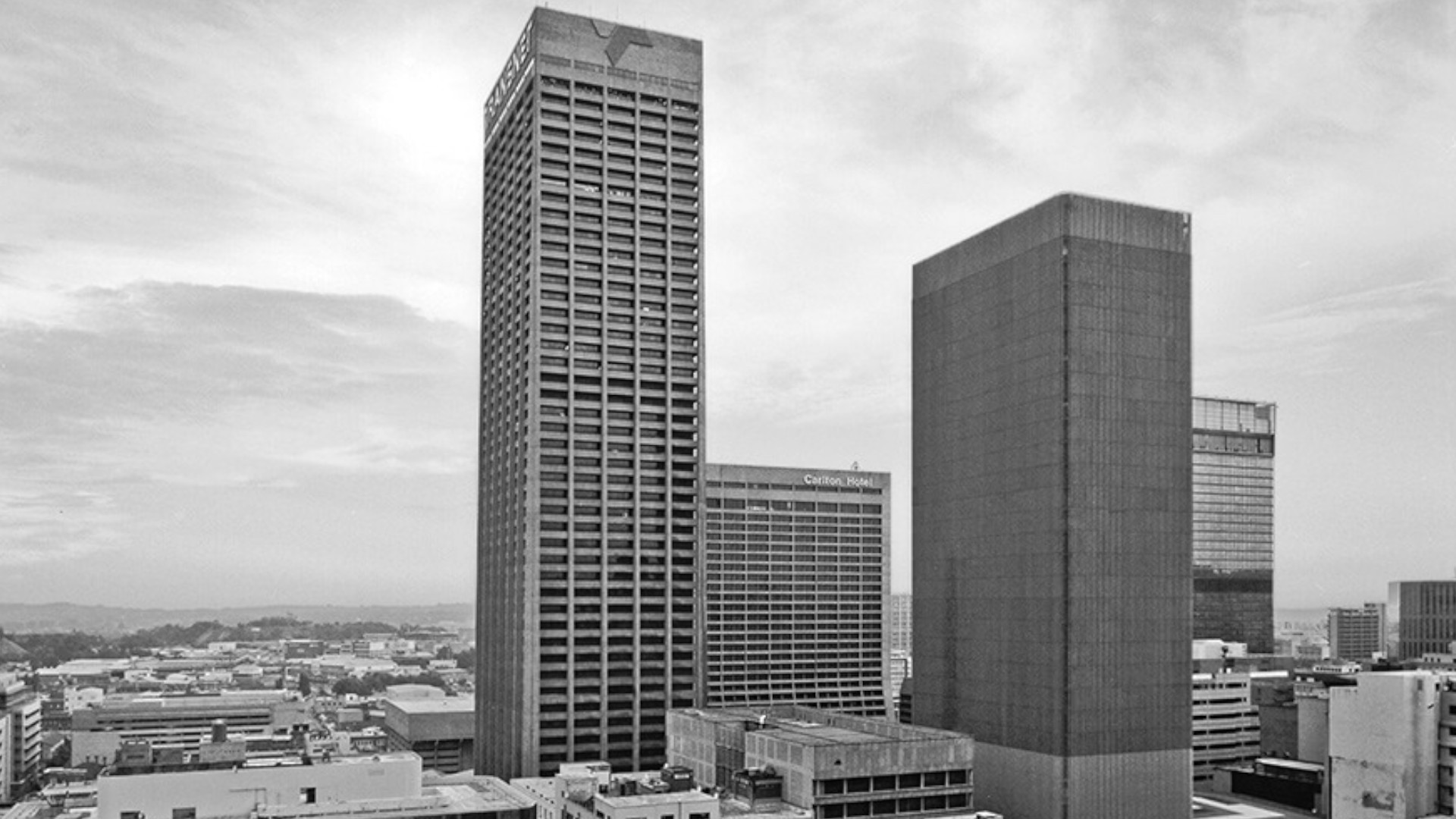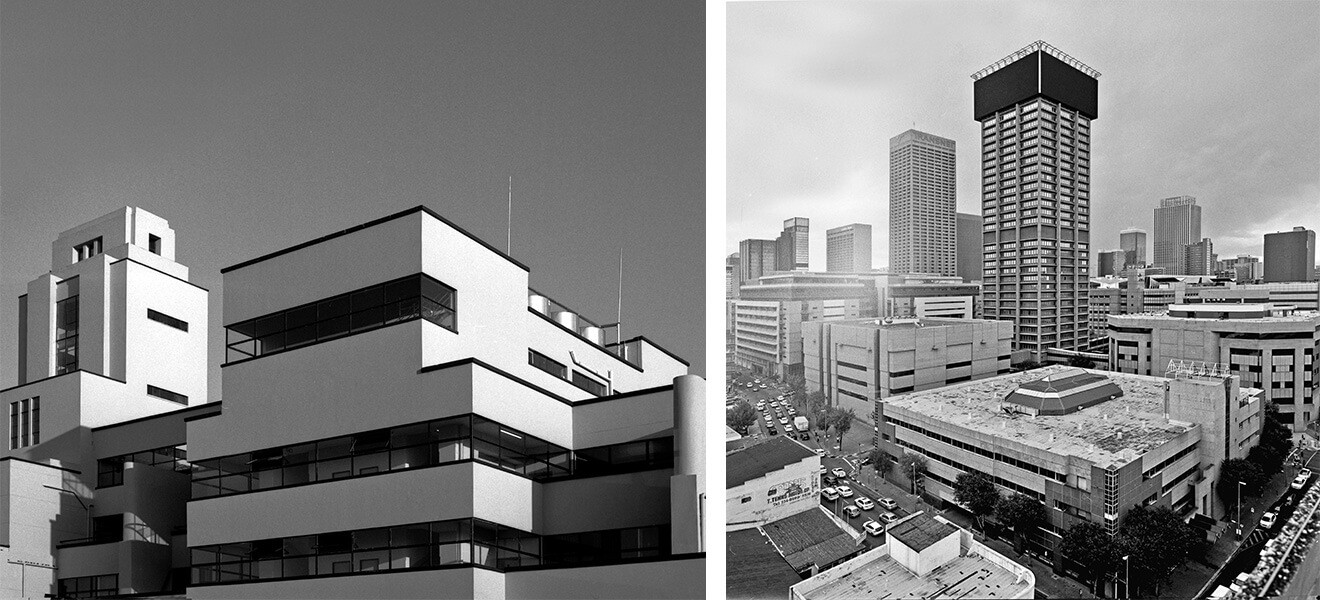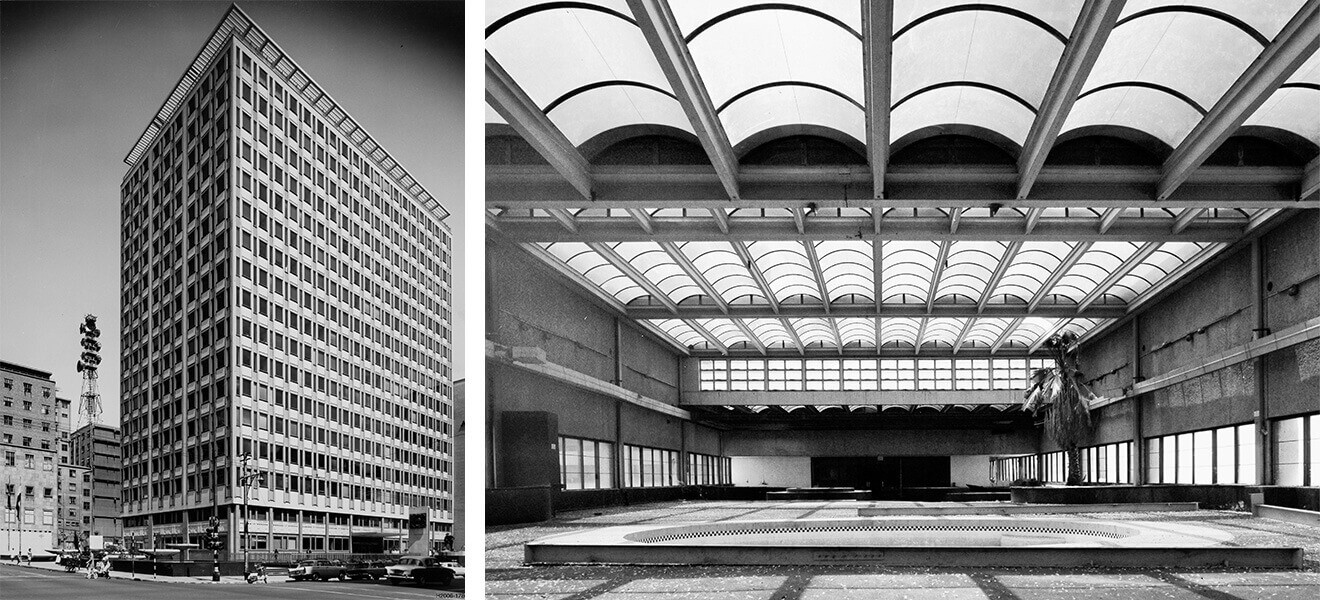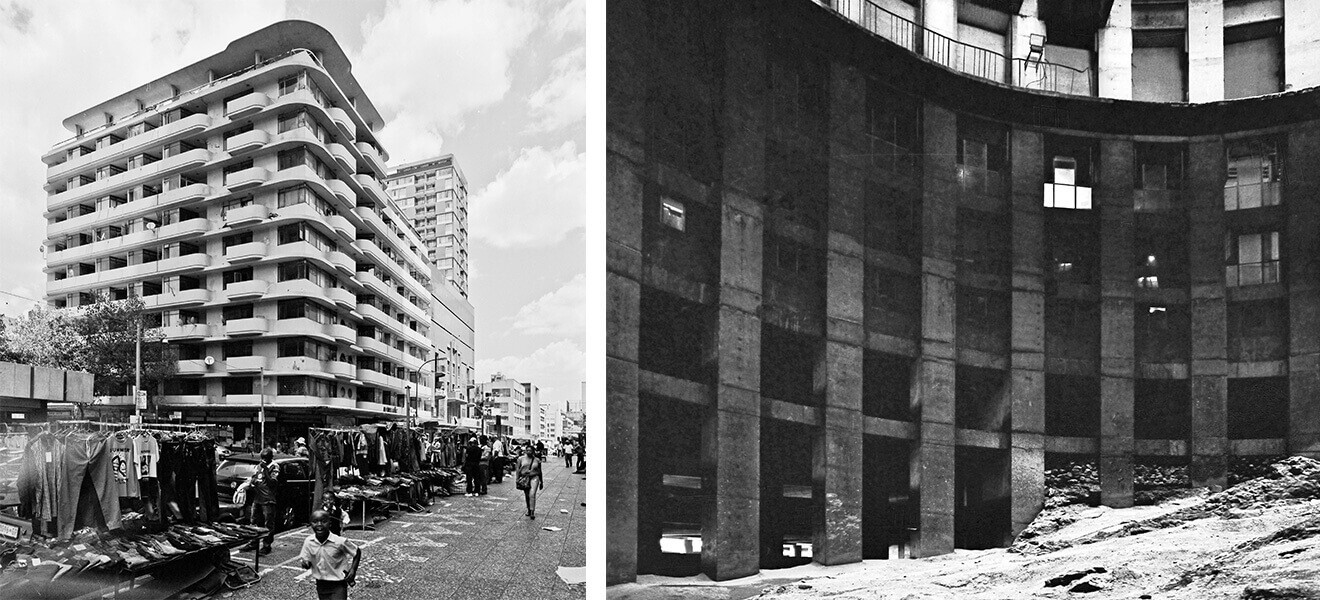Our tool for managing your permission to our use of cookies is temporarily offline. Therefore some functionality is missing.

TALL STOREYS.
A new book about Joburg’s 20th-century skyscrapers is like an X-ray through time
Just looking at the most recent title released by Joburg-based independent book publisher Fourthwall Books constitutes an urban adventure. Up Up: Stories of Johannesburg’s Highrises is a tour through Jozi’s skyscrapers, the tall modernist towers built in the second half of the century, which define the city’s iconic skyline.
Take the Carlton Centre, still the highest building in Africa and once the highest reinforced concrete building in the world. It has 20 elevators and testifies to a time when Johannesburg saw itself as a little New York, powered towards the sky by mineral wealth.
Recent photographs of the Carlton Hotel, where the likes of Mick Jagger, Hillary Clinton and Whitney Houston once preferred to stay, show it looking as if it closed just yesterday (when in fact the doors shut nearly 20 years ago). The rooms are simply empty, as if guests vacated them minutes earlier. Keys still hang on the hooks behind the reception, untouched for two decades. The place appears frozen in time.

THE BOOK BRILLIANTLY CAPTURES HOW THESE SEEMINGLY IMMOVABLE BUILDINGS, CONCEIVED IN A SHOW OF WEALTH AND POWER WITH A SPECIFIC FUTURE IN MIND, NOW EXEMPLIFY A VERY DIFFERENT JOHANNESBURG
But the Carlton is the exception. The others, and there are many of them, show Johannesburg dramatically changed. The book brilliantly captures how these seemingly immovable buildings, conceived in a show of wealth and power with a specific future in mind, now exemplify a very different Johannesburg. They have accommodated lives far removed from those their architects and developers conceived. Ponte City, which has been so well documented, was built to be the most glamorous apartment block in the city. It became a towering slum, its inner well piled with garbage, and is now on its way to a third incarnation as a hub of inner-city living.
The Carlton and Ponte City may be extreme cases, but the book features more than 20 massive edifices, all of which have a story to tell – and, together, they begin to tell the story of the city itself. For each building, there are historical facts, floor plans, archival records and contemporary photographs. Interviews, reports and essays help bring the structures to life.
Paging through the book is almost like looking at an X-ray… The bones of the past seem somehow visible in the image of the present. Any curious reader will want to get off the couch, into their car and onto the streets to stare at these strange concrete creations, wondering at the stories they tell.

PHOTOGRAPHY: SUPPLIED


